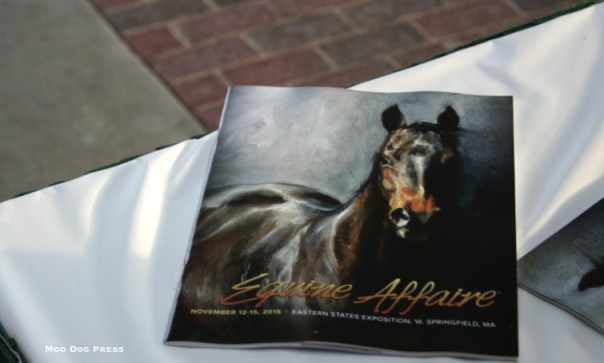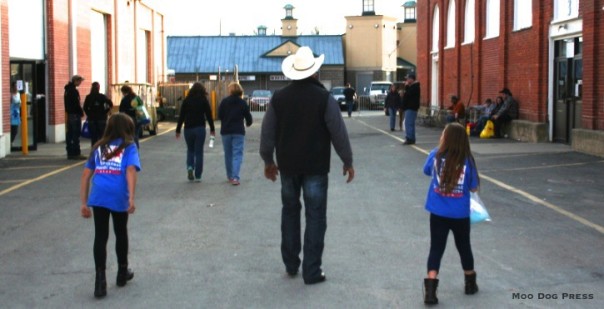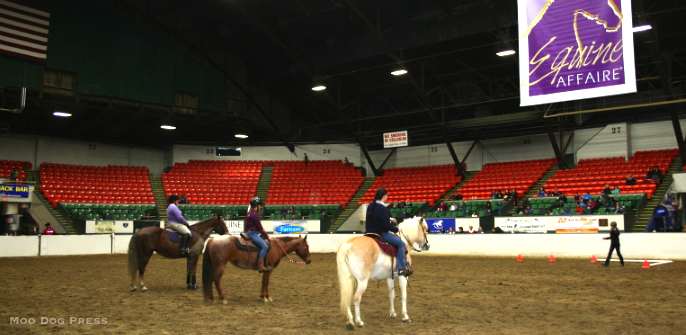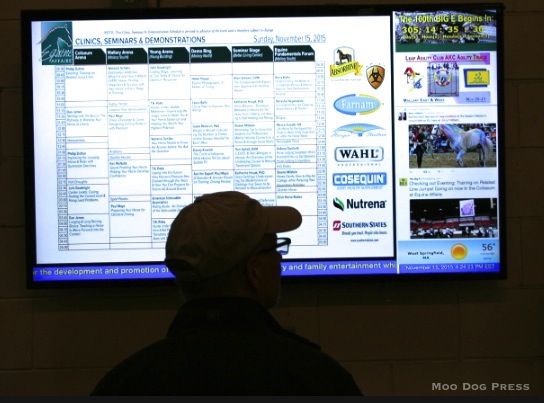Horses, Humans: Nokota Heritage: Follow Your Heart At The Equine Affaire
Yes, they really did travel from North Dakota to Massachusetts to be at The Equine Affaire. Frank Kuntz of The Nokota Horse Conservancy confirmed that as he stepped forward to put a breed brochure in my hands at the end of a very long day. A chance encounter with a dedicated man led to this story.
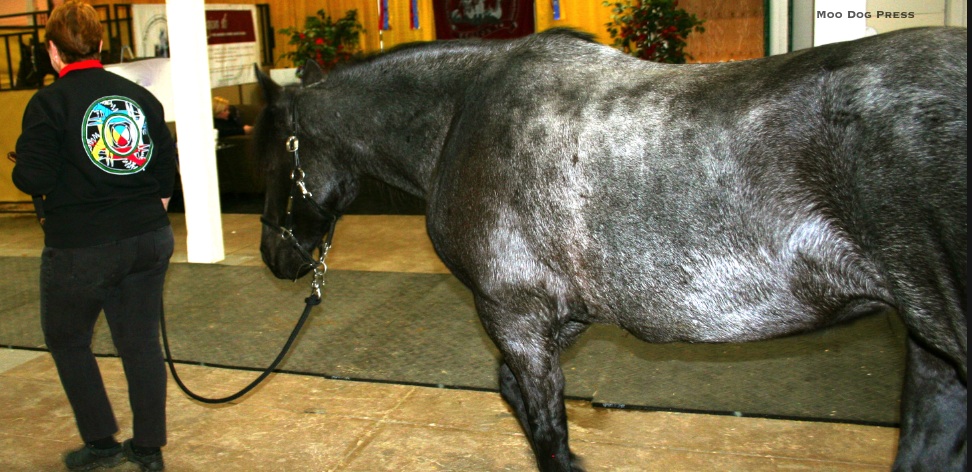
Horse coming through. See that distinctive colorful medallion on the jacket back of the woman leading this gorgeous horse? Read on.
But first some details.
It was late in the day on Sunday, the last day of the Equine Affaire. The Breed Pavilion inside the Stroh Building at Eastern States Exposition in West Springfield is part of this annual four-day event which has a counterpart in Columbus, Ohio. The Equine Affaire is a place to connect with others passionate about equines. That's a nice way of saying horse crazy.Interested in a trailer or RV? Here is where to step right up a ramp and look over every feature from escape doors and dressing rooms or hitches. Clinics and seminars are at the heart of it all – with pre-registration it was possible to bring a horse and ride under the direction of professionals. Huge in scope, exhibit areas spread across acres, multiple buildings, barns, the coliseum arena.
Shopping paradise for those who have equines (or wish they did) mixes it up with opportunities to talk face-to-face with small and large farm owners, breed representatives, horses, trainers, organizations, and non-profits. There's lots to see, plenty of walking involved.
Blankets. Manure rakes, shovels. Photography, frames, prints. Jewelry. Confections. Feed and nutrition. Supplements. Wormers. Barns and plans for run-in sheds or lavish stalls and living quarters above. Toys. Articulated horse skeletons for a look at anatomy. Stand-alone manes and tails on which to practice braids or just brush and comb. A vivid display of the inner workings of the equine digestive processes. Rugged outdoor vests, overalls, coats, hoodies. Reflective gear. Ropes, lariats. Portable corrals, tractors, loaders, machinery to help with nearly task imaginable around a farm, ranch, pasture.
Having had the experience of exploring for days on horseback using not much equipment but enthusiasm to hit the trail and leave the things of man behind, there is an understanding that much of what is on display is for show or decorative purposes, a reminder of what horses can do for people even just by looking at them. Still, the visual extravaganza is informative, entertaining, and there is always something new to learn. Or remember. Like follow your heart and have the sense to listen and act as it may lead somewhere amazing.
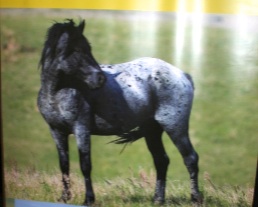 Now back to the Nokota horse. The name was created to “recognize the North Dakota heritage of the historic and unique population of horses” – and is a registered trademark of the Nokota Horse Conservancy.
Now back to the Nokota horse. The name was created to “recognize the North Dakota heritage of the historic and unique population of horses” – and is a registered trademark of the Nokota Horse Conservancy.

The four horse medallion by Butch Thunderhawk for the Nokota Horse Conservancy is linked to the official site for more information.
The vision is to “open a sanctuary to support a diverse spectrum of the Native American horses, including descendants of Sitting Bull’s war horses, as well as pioneer ranch horses of the Northern Great Plains (Nokota®) as a free and evolving population within their natural habitat, to develop a teaching and learning center, complete with a therapeutic riding center.” 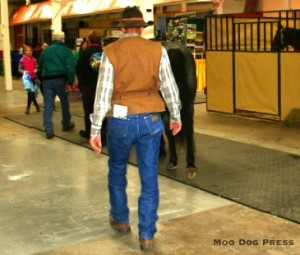
Featured on their site is a documentary well worth watching on Vimeo (linked here) about the life-long efforts by two brothers and a growing group of people who love these horses and are dedicated to preserve and grow the breed. There is more about Sioux/Native American horse culture and ancestors that trace back to include Sitting Bull's herd of war ponies.
The two Kuntz brothers, Vietnam veterans, started off with one horse culled from a group rounded up at the Theodore Roosevelt National Park – bought for $170. (The rest of those horses were sold for slaughter.)
Looking for a “horse that would last, but it turned into something different,” stated Leo Kuntz in the Nokota Horse/University of California (Berkeley) documentary done in 2008 by Luci Schwartz, a then-UC-Berkeley student.
“They are some of the smartest, kindest, most trusting horses I've ever worked around,” states Frank in the documentary.
The brothers wanted to see the breed declared as North Dakota's state horse, but it was no go the first time around. But the people who love these tough horses just don't give up. They did research, gathered information. DNA tests and a three-year historical study were then done at Harvard University to tease out the threads of what makes up the parentage of these hardy equines.
In 1993 the breed was officially named the North Dakota state horse. Look it up.
Artist Butch Thunderhawk created a distinctive logo of four horses interlocked within two circles for The Nokota Horse Conservancy which also decorated jackets worn at The Equine Affaire, which helped piece this tale together.
Because following where curiosity led meant sitting in for “Judging Conformation – Putting the Pieces Together To be A Successful Horse Judge” with Deborah Danforth, a New England certified 4-H A-list judge, due to the lively presentation and the back-and-forth interaction with the audience.
Danforth, who is an adjunct professor and horse judging team coach at Vermont Technical College, specializes in “working with youth through teaching, training and coaching” and that experience shows.
The walk back out to the parking lot included seeing some weary exhibitors along with many happy visitors swapping stories and toting plastic-wrapped blankets, arms full of multiple bags full of their finds, some even pulling loaded-up wheeled carts. And a glorious cloud and sky formation outdoors, a spectacular way to wrap up the day.

